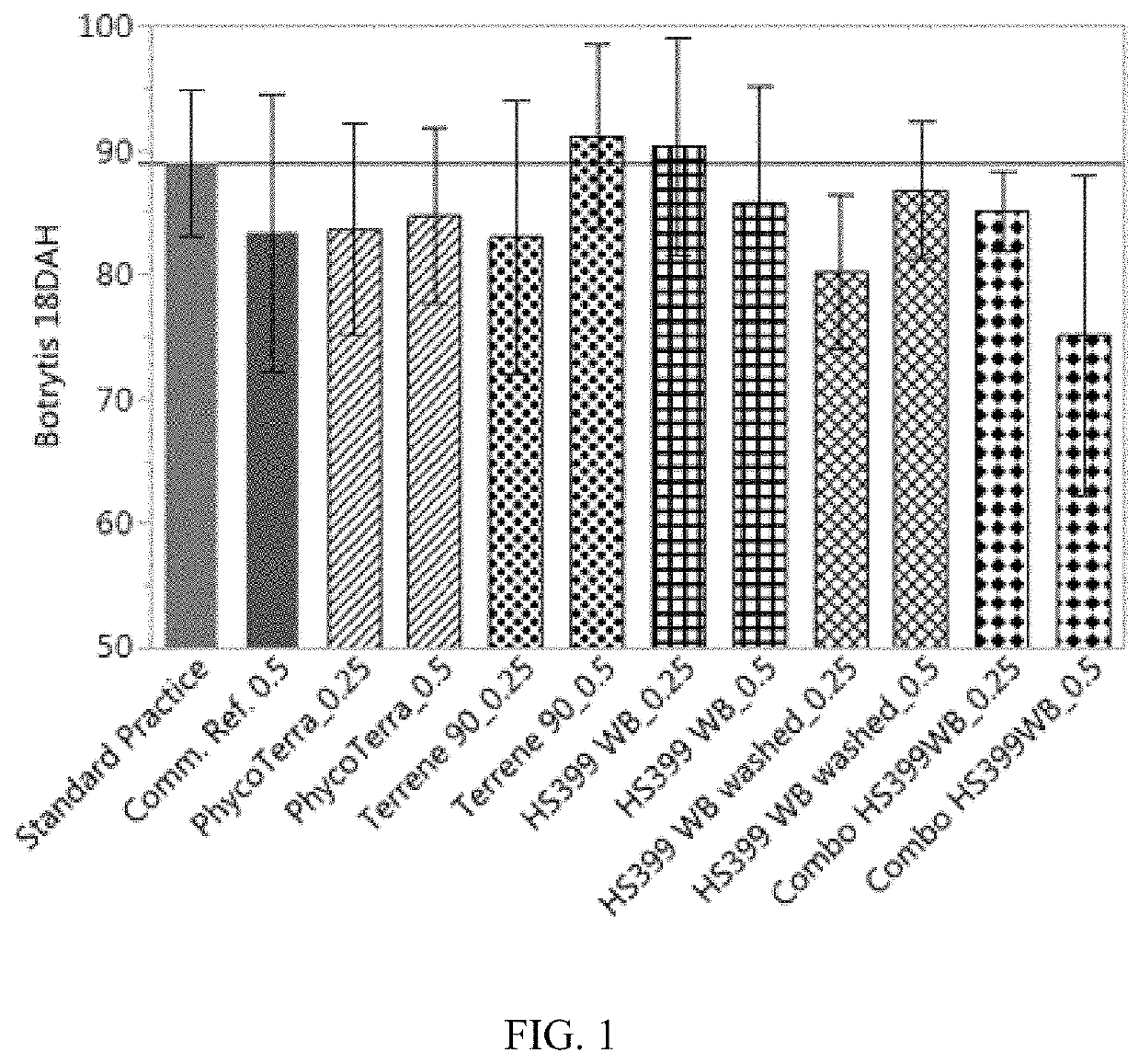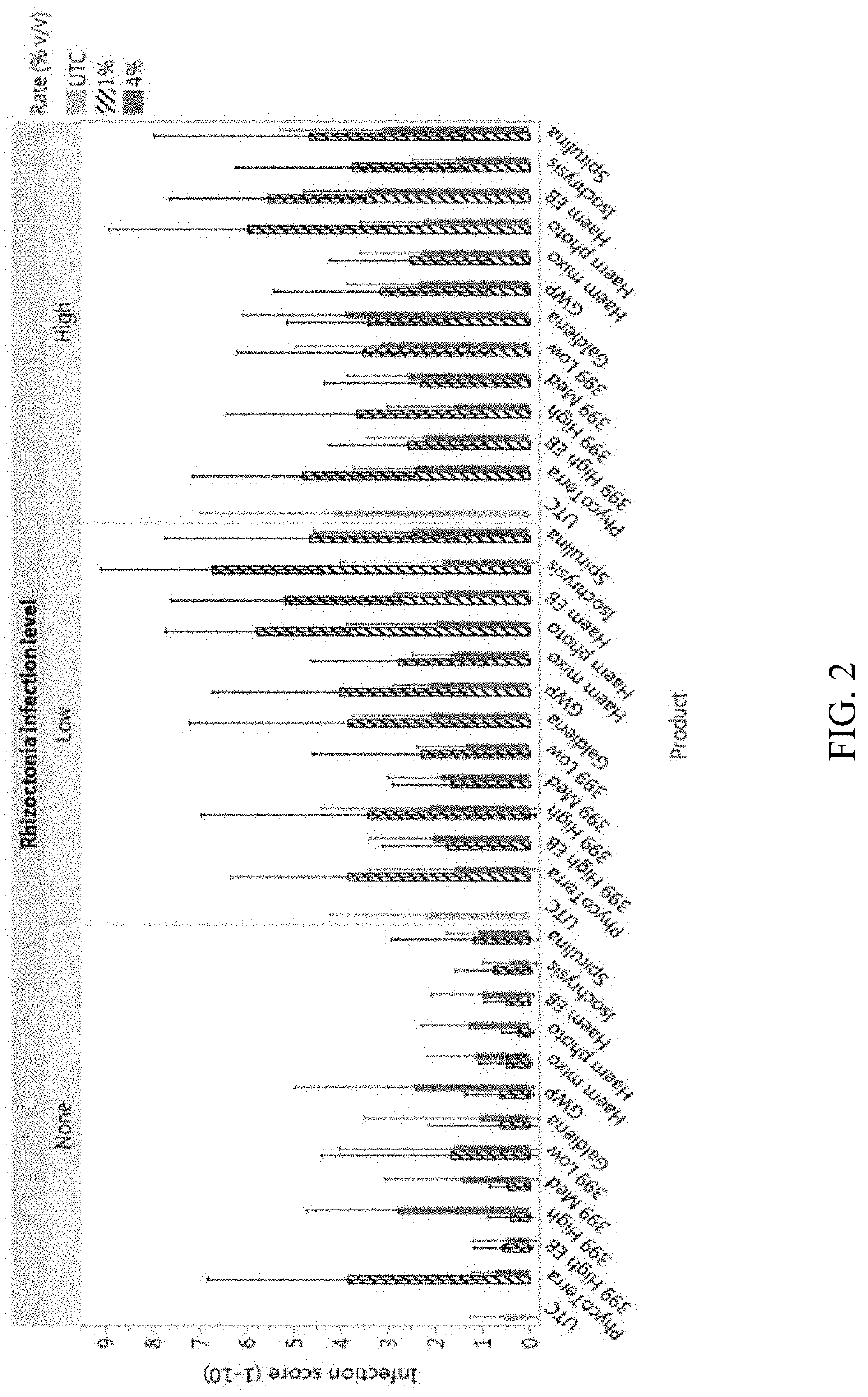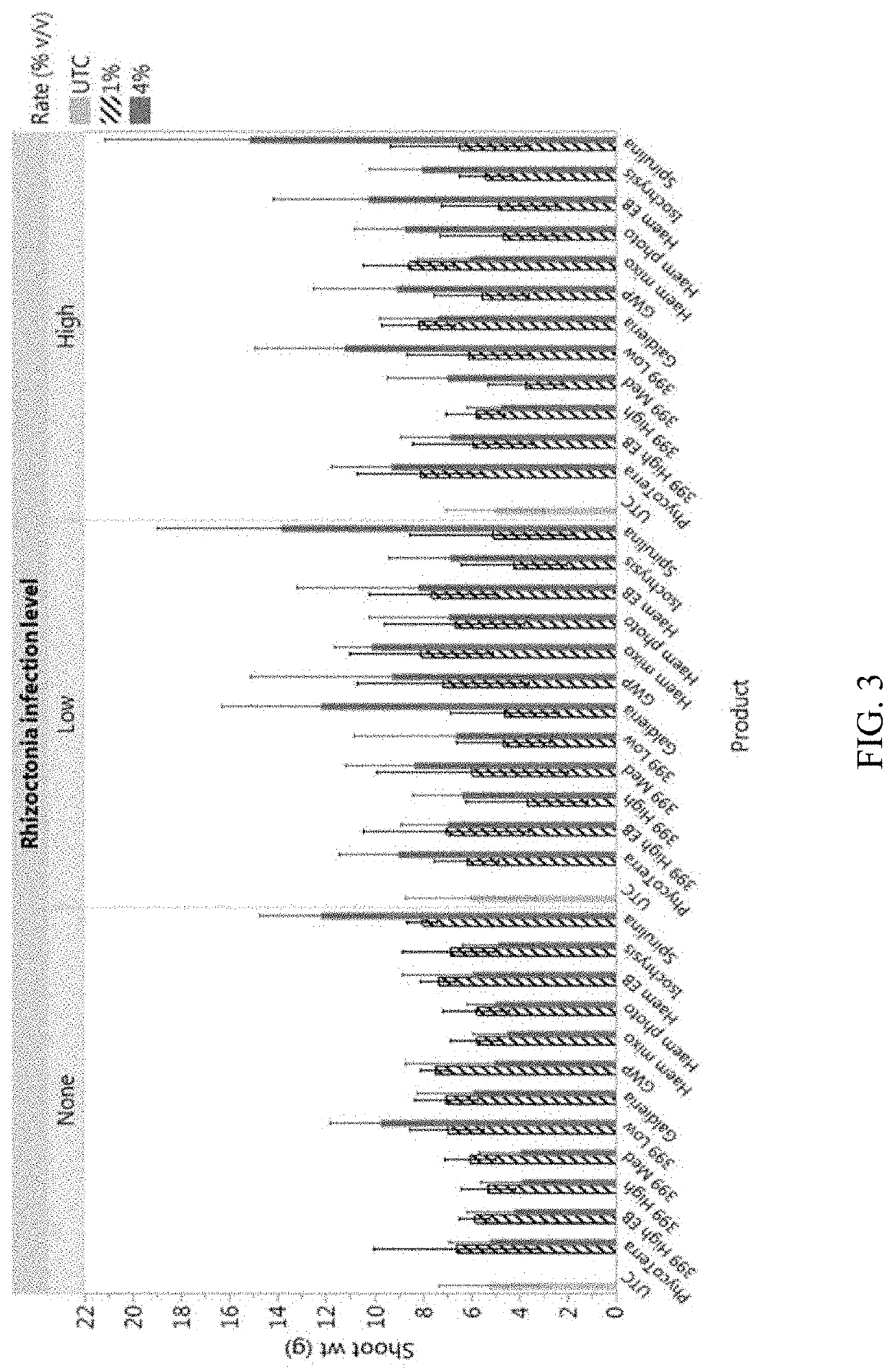Compositions and methods for indirectly reducing incidence of fungal pathogen activity in plants
a technology of indirect reduction and fungal pathogens, applied in the field of agriculture, can solve the problems affecting our ability to provide raw plant materials for an ever-increasing population, and achieve the effects of reducing the incidence of fungal pathogens
- Summary
- Abstract
- Description
- Claims
- Application Information
AI Technical Summary
Benefits of technology
Problems solved by technology
Method used
Image
Examples
example 1
[0110]A trial was conducted on strawberry (var. Portola) in Guadalupe Valley, Calif. to evaluate the performance the PHYCOTERRA®Chlorella microalgae composition, the Aurantiochytrium acetophilum HS399 whole biomass (WB) microalgae composition, the Aurantiochytrium acetophilum HS399 washed whole biomass (WB washed) microalgae composition, the OMRI certified TERRENE®Chlorella pasteurized at 90° C. microalgae composition, and the combination 25% Chlorella: 75% HS399 whole biomass (WB) microalgae composition of strawberry growth, yield, post-harvest berry quality, and incidence of diseased / dying plants. All plots received standard local fertilization regimen used by the grower for this crop, excluding biostimulants. Our products were added in addition to standard fertilization. Strawberry plants were transplanted to the field in early June 2017, according to local commercial practice. The first product application was via drip irrigation at the time of transplanting and then every 14 da...
example 2
[0116]For the treatments referred to in this Example as Commercial Reference+TERRENE® pasteurized at 65° C., the commercial reference was applied first to the soil at a rate of 20 gal / acre. The TERRENE® pasteurized at 65° C. microalgae composition was then added on top via drip irrigation. The commercial reference was only applied 4 times per season, whereas the TERRENE® pasteurized at 65° C. microalgae composition was applied every 14 days until harvest.
[0117]For the treatments referred to in this Example as Commercial Reference+TERRENE® pasteurized at 90° C., the commercial reference was applied first to the soil at a rate of 20 gal / acre. The TERRENE® pasteurized at 90° C. microalgae composition was then added on top via drip irrigation. The commercial reference was only applied 4 times per season, whereas the TERRENE® pasteurized at 90° C. microalgae composition was applied every 14 days until harvest.
[0118]A trial was conducted on strawberry (var. Portola—Organic) in Santa Maria...
example 3
[0126]A trial was conducted on green bean plants in a greenhouse in Phelps, N.Y. to evaluate the applications of several microalgae compositions on the growth and yield of green bean plants in the greenhouse. Twelve microalgae compositions were evaluated in this Example; they are detailed in Table 6 below. The twelve microalgae compositions were evaluated at 1% and 4% solutions and each microalgae treatment combination was evaluated against green bean seedlings: a) alone; b) with a low rate of Rhizoctonia; and C) with a high rate of Rhizoctonia solani. Thus, with each formulation, there were 3 main effects and 15 replicates, or 45 pots per formulation rate. Pots of green beans seedlings were additionally grown with no formulations, and with no formulations, but with the LOW and HIGH rates of Rhizoctonia; these seedlings served as non-treated controls.
[0127]
TABLE 6Microalgae Composition TreatmentsTreatmentDescription (10% solids solution)PhycoTerra ®Chlorella-based productHS399 High ...
PUM
 Login to View More
Login to View More Abstract
Description
Claims
Application Information
 Login to View More
Login to View More - R&D
- Intellectual Property
- Life Sciences
- Materials
- Tech Scout
- Unparalleled Data Quality
- Higher Quality Content
- 60% Fewer Hallucinations
Browse by: Latest US Patents, China's latest patents, Technical Efficacy Thesaurus, Application Domain, Technology Topic, Popular Technical Reports.
© 2025 PatSnap. All rights reserved.Legal|Privacy policy|Modern Slavery Act Transparency Statement|Sitemap|About US| Contact US: help@patsnap.com



